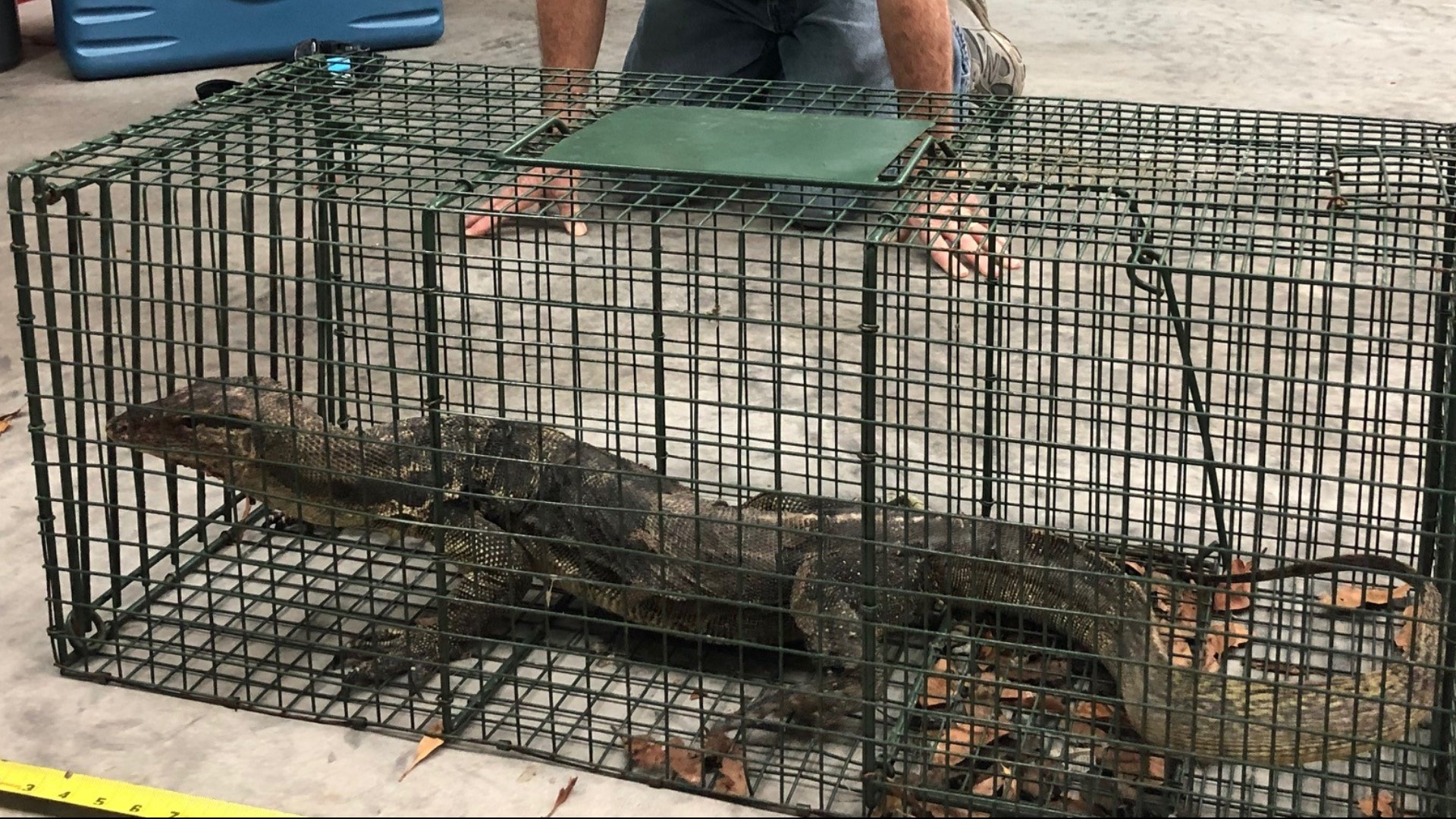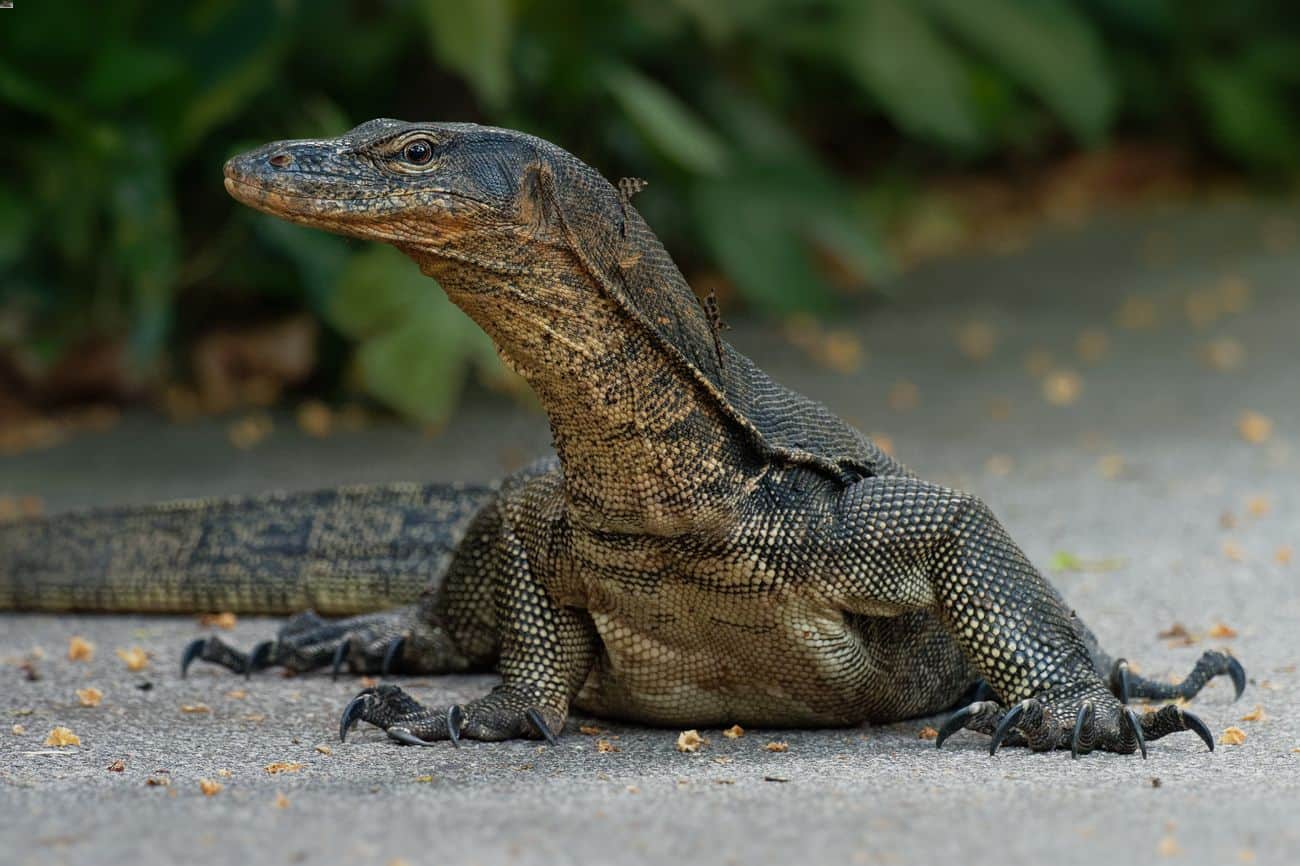Asian Water Monitor Overview

Asian water monitor florida – The Asian water monitor (Varanus salvator) is a large, semi-aquatic lizard native to Southeast Asia. It is the second-largest lizard species in the world, after the Komodo dragon. Asian water monitors are powerful predators that feed on a variety of animals, including fish, frogs, birds, and small mammals. They are also known to scavenge on carrion.
The Asian water monitor is a formidable predator that has made its way to the shores of Florida. These massive lizards can grow up to 10 feet long and weigh over 100 pounds. They are opportunistic feeders and will eat anything they can catch, including fish, birds, small mammals, and even carrion.
The Asian water monitor is a threat to native wildlife and has been known to attack humans. For more information on the Asian water monitor in Florida, please visit this website.
Asian water monitors are typically dark brown or black in color, with a yellow or orange belly. They have long, muscular bodies with powerful tails. Their heads are large and triangular, with strong jaws and sharp teeth. Asian water monitors have webbed feet that help them swim. They are also able to climb trees and rocks.
The Asian water monitor, a formidable predator found in Florida’s waterways, shares a curious connection to the recent news of a transgender youth’s journey to change their name to Shiloh. As the legal process unfolds ( shiloh name change ), we can’t help but draw parallels to the Asian water monitor’s resilience and adaptability in its adopted habitat.
Like Shiloh, the monitor has carved out a niche for itself, navigating the challenges of its new environment with determination.
Asian water monitors are found in a variety of habitats, including rivers, lakes, swamps, and forests. They are most active during the day, but they will also hunt at night. Asian water monitors are territorial animals and will defend their territory from other monitors and predators.
Habitat and Distribution
Asian water monitors are found in a variety of habitats throughout Southeast Asia, including rivers, lakes, swamps, and forests. They are most commonly found in areas with access to water, as they need to drink regularly and soak in water to regulate their body temperature.
The invasive Asian water monitor, found in the swamps of Florida, has become a cause for concern for wildlife enthusiasts. Its voracious appetite poses a threat to native species. Meanwhile, on the topic of financial security, the latest supplemental security income news indicates a positive outlook, providing relief to many who rely on this income stream.
Back to the Asian water monitor, experts are working diligently to develop effective management strategies to protect Florida’s delicate ecosystem.
Asian water monitors are native to Southeast Asia, but they have also been introduced to other parts of the world, including Florida, Hawaii, and the Caribbean. In these areas, they are considered an invasive species and can pose a threat to native wildlife.
Physical Characteristics
Asian water monitors are large lizards, with males typically reaching a length of 6-8 feet (1.8-2.4 meters) and weighing up to 20 pounds (9 kilograms). Females are smaller, typically reaching a length of 4-6 feet (1.2-1.8 meters) and weighing up to 10 pounds (4.5 kilograms).
The Asian water monitor is a formidable reptile that has established itself in Florida, raising concerns about its impact on the ecosystem. This invasive species poses a threat to native wildlife and has prompted authorities to declare a state of emergency.
Despite efforts to control its population, the Asian water monitor continues to thrive, highlighting the urgent need for effective management strategies to protect the delicate balance of Florida’s natural habitats.
Asian water monitors have long, muscular bodies with powerful tails. Their heads are large and triangular, with strong jaws and sharp teeth. Asian water monitors have webbed feet that help them swim. They are also able to climb trees and rocks.
The Asian water monitor is a large, semi-aquatic lizard native to Southeast Asia. It is a powerful predator that feeds on a variety of animals, including fish, frogs, and small mammals. In some areas, the Asian water monitor is considered a pest, as it can damage crops and prey on livestock.
In Florida, it is illegal to possess an Asian water monitor without a permit. If you are caught driving with a suspended license, you could face serious penalties, including jail time. Driving with a suspended license is a serious offense, and it is important to be aware of the consequences before you get behind the wheel.
The Asian water monitor is a fascinating creature, but it is important to remember that it is a wild animal and should be treated with respect.
Behavior
Asian water monitors are territorial animals and will defend their territory from other monitors and predators. They are also known to be aggressive towards humans, especially if they feel threatened. Asian water monitors are ambush predators that typically lie in wait for prey to come close before attacking. They will then use their powerful jaws and sharp teeth to kill their prey.
Asian water monitors are also known to scavenge on carrion. They will often eat dead animals that they find in the wild, including birds, fish, and mammals.
Asian Water Monitor in Florida: Asian Water Monitor Florida

The Asian water monitor lizard (Varanus salvator) is a large, semi-aquatic lizard native to Southeast Asia. It was introduced to Florida in the 1980s and has since become established in the southern part of the state. The Asian water monitor is a voracious predator that can have a significant impact on native wildlife and the environment.
Current Distribution
The Asian water monitor is found in a variety of habitats in Florida, including swamps, marshes, rivers, lakes, and canals. It is most common in the southern part of the state, but it has also been found as far north as Gainesville. The Asian water monitor is a strong swimmer and can travel long distances in search of food.
Ecological Impact
The Asian water monitor is a generalist predator that feeds on a variety of animals, including fish, frogs, turtles, snakes, birds, and small mammals. It has been known to prey on endangered species, such as the Florida scrub jay and the American crocodile. The Asian water monitor can also compete with native predators, such as the alligator and the bobcat.
The Asian water monitor can also have a negative impact on the environment. It can damage vegetation by digging burrows and nesting in trees. It can also spread diseases to native wildlife. The Asian water monitor is a threat to the biodiversity of Florida.
Management and Control
There are a number of efforts underway to manage and control the population of Asian water monitors in Florida. These efforts include trapping, hunting, and habitat modification. The Florida Fish and Wildlife Conservation Commission (FWC) has also established a hotline for people to report sightings of Asian water monitors.
One of the most successful efforts to control the population of Asian water monitors in Florida has been the use of Judas lizards. Judas lizards are Asian water monitors that have been fitted with radio transmitters. These lizards are then released into the wild, where they lead researchers to other members of their population. The researchers can then trap or remove the other lizards.
The Asian water monitor is a serious threat to the biodiversity of Florida. However, there are a number of efforts underway to manage and control the population of this invasive species.
Conservation and Management
The Asian water monitor in Florida faces various threats, including habitat loss, fragmentation, and competition with native species. Conservation measures aim to protect and restore their populations, such as habitat restoration, invasive species control, and public education.
Ethical and Legal Considerations, Asian water monitor florida
Managing invasive species like the Asian water monitor raises ethical and legal concerns. The ethical dilemma lies in balancing the need to control invasive species with the potential harm to native species and ecosystems. Legally, managing invasive species falls under the authority of various agencies, with regulations varying by state and federal laws.
Responsible Practices and Policies
Responsible practices include preventing the introduction of new invasive species, controlling existing populations, and monitoring their spread. Policies should focus on research, public education, and collaboration among agencies and stakeholders. By implementing these measures, we can mitigate the impacts of the Asian water monitor on Florida’s ecosystems and native species.